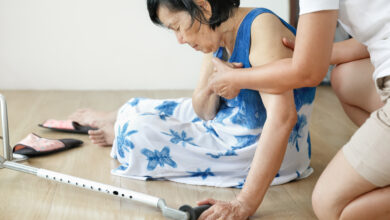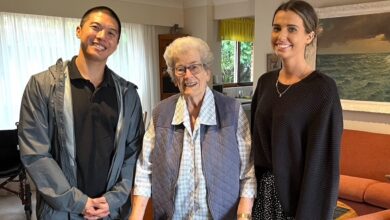Reablement of the best aged care policy no one ever heard of

Sometimes the best ideas are so obvious no one seems to pay attention to them.
Reablement is such a clever idea that it seems almost unnecessary to have a specialised word in aged care for it. Yet it may be a case in which linguistic confusion has long compounded the problem of invisibility and ignorance, even confounding would-be advocates of the idea.
For a start, ‘reablement’ is not a word found in many dictionaries. It cannot be found in either the Collins or Macquarie dictionaries, for example. Searching online, I have learned that it is recorded in the Oxford dictionary, where its first reported use was in The Lancet in the 1940s. Its meaning there is given as ‘rehabilitation; frequently attributive’. A great word for Scrabble, but hardly a candidate for the most popular word of the year.
But knowing the dictionary meaning of the term is not enough. Welcome to the world of evidence-based policy in Australia. Like climate change, the more evidence has accrued, the more the approach seems to have been ignored by our policymakers.
In many European countries, the approach had been in use in various ways for decades before it was recognised in the English-speaking world. The efficacy of the enablement approach in aged care was clinically demonstrated in Britain in the 1990s and it quickly spread to New Zealand and Australia.
It first began to be adopted in Australia after it was implemented by Silver Chain in Western Australia from as early as 2000 following the work of Professor Gill Lewin. It has been called ‘reablement’ in that state for many years. But as the approach began to spread across Australia, the term seems to have been lost in translation.
In Victoria, it became referred to as the ‘wellness’ approach. In NSW, it was described as ‘restorative care’ or the ‘restorative approach’. In both states, the principle soon became a key philosophy informing the way support was provided to people at home through the Home and Community Care (HACC) program.
The brilliant idea was never taken up in the home care packages. Nor did it make it to residential care – despite the fact that a number of the most progressive providers have adopted key elements of the approach, such as ‘geri-gym’ sessions, activity and fitness programs, and the seniors gym program offered by Uniting Care.
But while the approach was central to the HACC program for a few years, it was soon forgotten as reform focused on marketisation and choice. When services are intended to provide what consumers want, the emphasis was soon placed on ‘consumer choice’. And when funding moves from block funding to a fee-for-service principle, a philosophy of preventive health and empowerment no longer seems so attractive to providers.
If the term is confusing and unknown, the idea is refreshingly clear. Put simply, it is a rejection of the old assumption that ageing is an irreversible and inevitable process of physical and mental decline. Because most people, including older people, are at less than optimal fitness, there is considerable scope to improve quality of life by improving fitness.
Simple, targeted, repetitive exercise can help – starting with the now-classic exercise of repeatedly standing up and sitting down at the table.
An enabling approach can go well beyond this, extending to a wide range of other activities – promoting fitness and mobility, supporting social engagement, developing creative engagement and fostering self-care skills such as cooking for those men who have never learned before.
Instead of promoting dependence, care and support can be provided in a more liberating manner that will enhance a person’s independence and help them maintain, rather than lose, existing abilities. Done in the right way, this is a win for older people and for the services they depend on, freeing up resources for those whose dependence on help is reduced or contained.
Certainly, many older people experience health declines before they are first accepted into community care. But once necessary medical attention has been provided, life can and should get better for most older people. Enablement supports and facilitates this improvement. For others, an enabling approach can help maintain existing abilities and prevent or delay any decline.
Staff training of all personnel is essential – this is not something that can be left to a handful of specialised physiotherapists or targeted at just a few select consumers. Assessment also needs to play a part, and all assessors need to understand the concept and ensure that the right sorts of support can be used.
There are some hopeful signs of a reawakening of interest in reablement among policymakers for those who receive at-home support services. Amazingly, there is even some additional funding identified in the 2018–19 Commonwealth budget: a total of $29.2 million over two years.
This is hardly enough when less than $15 million is spread across about 800,000 consumers who use the Commonwealth Home Support Programme each year. And there is nothing for the home care packages or residential care. But at least it is a new beginning.
Perhaps, soon, everyone will at least get to learn the meaning of reablement.
 Professor Michael Fine is honorary professor in sociology at Macquarie University.*
Professor Michael Fine is honorary professor in sociology at Macquarie University.*
* I contributed to a pre-conference workshop on ‘Evidence-based Reablement Approaches Across Aged Care Services’ at the Australian Association of Gerontology’s Annual Conference in Melbourne on 20 November 2018. I wish to acknowledge here the contribution of other speakers, workshop participants and the facilitator, Dr Sandra South of the AAG.
Email: [email protected]





